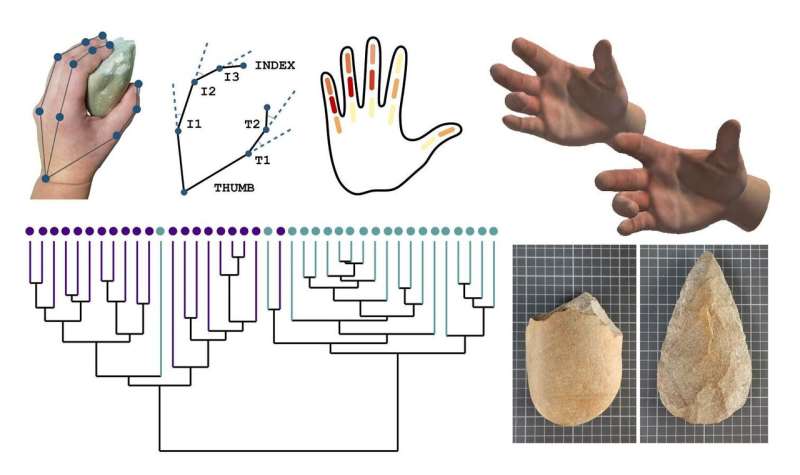Credit: A. Fedato et al
Emiliano Bruner, a paleoneurologist at the Centro Nacional de Investigación sobre la Evolución Humana (CENIEH), has coordinated a study published recently in the journal Archaeological and Anthropological Sciences, on the ergonomic relationship between hand and Lower Paleolithic stone tools, in particular for choppers and handaxes.
The results of this work, carried out by Annapaola Fedato, a Ph.D. candidate at the Universidad de Burgos, in collaboration with the Museo de la Evolución Humana and the Universidad Isabel I, suggest that the two tool types stimulate very different ergonomic relationships with the hand. They also show that the fingers most involved are the last three (little, ring and middle fingers), and not the thumb or index finger, as one might expect.
The connection between hand and tool prompts a response in the brain which leads to the inclusion of the tool in the body scheme. The different finger combinations used for grasping these two types of implement thus suggest that these might be associated with different cognitive responses when integrating the brain-body-environment system.
The study involved 82 volunteer participants of both sexes who were invited to handle 40 implements, both pebble tools and handaxes, using a digital glove that records the position and flexion of each phalanx to quantify their finger flexion patterns during tactile exploration. The exploration was not associated with the function of the tool, but rather the sensation of comfort in the hand-object relationship, assessing the sensory response of the body to the interaction with the implement.
More information: Annapaola Fedato et al. Hand grasping and finger flexion during Lower Paleolithic stone tool ergonomic exploration, Archaeological and Anthropological Sciences (2020). DOI: 10.1007/s12520-020-01189-w
Provided by CENIEH
























